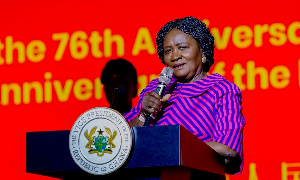“History, despite its wrenching pain, cannot be unlived, but if faced with
courage, need not be lived again.” Maya Angelou.
PRE-TRANSATLANTIC SLAVERY
Slavery has existed in societies around the world. People were enslaved in civilizations from Egypt to China to India. Slavery had existed in Africa for centuries. In most regions, it was a relatively minor institution.
The spread of Islam into Africa during the seventh century, however, ushered in an increase in slavery and the slave trade. Muslim rulers in Africa justified enslavement with the Muslim belief that non-Muslim prisoners of war could be bought and sold as slaves. As a result, Muslim-Arabs transported Africans to the Muslim lands of the Arabian Peninsula.
In most African and Muslim societies, slaves had some legal rights and an opportunity for social mobility. In the Muslim world, a few slaves even occupied positions of influence and power. Some served as generals in the army. In African societies, slaves could escape their bondage in numerous ways, including marrying into the family they served.
INTRODUCTION
After the discovery of the New World(Americas) in 1492 by the explorer, Christopher Columbus, he took sugar cane to the Caribbean Island of Santa Domingo for trial plantings in 1493.
The crop flourished and Columbus reported to his patron, Queen Isabella of Spain, that it grew faster in the West Indies(currently the Caribbean) than anywhere else in the world. Farmers from elsewhere in Europe including Britain, France and Holland made the most of Columbus’s discovery and sailed to the New World to set-up sugar, tobacco and cotton plantations.
Such plantations required a large supply of labour to make them profitable for their owners. European farm owners had planned to use Native Americans (Red Indians) as a source of cheap labor. But millions of them died from disease, warfare, and brutal treatment.
Therefore, the Europeans soon turned to Africa for labour, as that was the same era the Portuguese landed in the Western Coast of Africa for exploration.
BEGINNING OF THE TRANSATLANTIC SLAVERY IN THE 15TH CENTURY [1400’s]
The Atlantic slave trade in Africa began when the Portuguese arrived at the Western Coast of Africa in 1471, in the name of evangelism and exploration, and they later began shipping slaves from West Africa to the New World and Europe to argument the labour force needed on the plantation farms.
A number of twelve persons were the first to be shipped from West Africa to the New World, marking the beginning of the Atlantic slave trade. From the 1550s European ships carried increased numbers of African slaves to the Caribbean and Americas. By the 1700s Britain was one of the leading slave-trading powers in Europe alongside the French, Dutch, Portuguese and Spanish.
A ‘Triangular Trade’ developed, whereby ships carried European manufactured goods to Africa and exchanged them for slaves, who were then taken across the Atlantic to the Americas, where they were traded for sugar, cotton, rum and other goods with farm owners. Over 12 million Africans were taken across the Atlantic to work on the plantations in the Caribbean and the Americas.
Ships were ‘fitted out’ in ports such as Liverpool and Bristol. Merchants would invest money in preparing a ship for a long voyage. They would also buy large quantities of goods such as salt, knives, blankets, woollen cloth, brass pots, beads and beer to trade for slaves.
The ships sailed to slave collection points on the coast. Traders would buy the slaves from other traders or agents. These often had slave forts to keep the slaves under control and to defend against raids from people trying to seize the slaves. Africans brought slaves they had captured to the coast to sell to Europeans.
At this time African societies were usually tight knit communities
who were willing to capture Africans from other tribes and sell them to Europeans. They also brought ivory, gold and hides to trade. These were usually bartered for the goods the Africans wanted, like salt and manufactured goods like cloth and guns.
In African ports, European traders packed Africans into the dark holds of large ships. On board, Africans endured whippings and beatings from merchants, as well as diseases that swept through the vessel. Numerous Africans died from disease or physical abuse aboard the slave ships. Many others committed suicide by drowning.
Scholars estimate that roughly 20 percent of the Africans aboard each slave ship perished during the brutal trip. Sickening cruelty characterized this journey. This voyage that brought captured Africans to the West Indies(the Caribbean) and North and South America was known as the MIDDLE PASSAGE.
It was considered the middle leg of the transatlantic trade triangle. The duration of the transatlantic voyage varied widely, from one to six months depending on weather conditions.
One African, Olaudah Equiano, recalled the inhumane conditions on his trip from West Africa to the West Indies at age 12 in 1762.
REACHING THE NEW WORLD
Slaves who survived the ocean voyage “the middle passage” faced a difficult life in the Americas. Slaves usually were auctioned off to the highest bidder. After being sold, slaves worked on farms, in mines or fields or as domestic servants. Slaves lived a grueling existence. Many lived on little food in small, dreary huts. They worked long days and suffered beatings.
In much of the Americas, slavery was a lifelong condition, as well as a hereditary one. Enslaved Africans were considered to be property, not people. By stripping them of their own names and forcing them to adopt new ones, sometimes those of their owners or their trading links.
To cope with the horrors of slavery, slaves developed a way of life-based on their cultural heritage. They kept alive such things as their musical traditions as well as the stories of their ancestors. Slaves also found ways to resist. They made themselves less productive by breaking tools, uprooting plants, and working slowly. Thousands also ran away.
THE REBILLION
Some slaves pushed their resistance to open revolt. As early as 1522, about 20 slaves on Hispaniola attacked and killed several Spanish colonists. Larger revolts occurred throughout Spanish settlements during the 16th century. Occasional uprisings also occurred in Brazil, the West Indies, and North America.
In 1739, a group of slaves in South Carolina led an uprising known as the Stono Rebellion. Uprisings continued into the 1800s.
ABOLISHMENT IN THE 19TH CENTURY [1800’s]
European opposition to the Transatlantic Slave Trade developed slowly, and for a long time it was not effective because of the economic interests involved. There had always been individuals in Europe, and among the European settlers in the Americas, who had voiced their opposition to the trade and to the institution of slavery.
But it was not until the late 1700’s that anything resembling a serious political movement against slavery began in Europe. A bill for the abolition of the slave trade was passed in England in 1807 and implemented in 1808.
On March 2, 1807, President Thomas Jefferson signed into law a bill approved by the Congress ‘‘An Act to prohibit the importation of slaves into any port or place within the jurisdiction of the United States’’.
Subsequently other countries follows; 1811 – Spain abolishes slavery, 1813 – Sweden abolishes slavery, 1814 – Netherlands bans slave trading, 1848 – France abolishes slavery, 1851 – Brazil abolishes slave trading, 1886 – Slavery is abolished in Cuba and 1888 – Brazil abolishes slavery.
Notable Abolitionist include: Granville Sharp, Harriet Beecher Stowe, Harriet Tubman, David Walker, William Wilberforce, Olaudah Equiano, Thomas Clarkson, Hannah More, Harriet Jacobs, John Newton, William Lloyd Garrison, John Newton, Frederick Douglass, John Brown, among others
THE LEGACY LEFT BEHIND
The Trans-Atlantic Slave trade has caused notorious death and destitution of the African people. The slave trade and the legacy of slavery continue to have a profound impact on social and economic disparity,
hatred, bias, racism, and discrimination and continue to affect people in the Americas, particularly those of African descent.The Atlantic slave trade had a profound impact on both Africa and the Americas.
In Africa, numerous cultures lost generations of their fittest members-their young and able-to European traders and plantation owners. In addition, countless African families were torn apart. Many of them were never reunited. The slave trade devastated African societies!
CONCLUSION
We acknowledge that people of African descent live all over the world, although in many instances they have been renamed, suppressed and marginalized. On every continent African and African Descendants continue to suffer from racial discrimination… We affirm that the Trans-Atlantic Slave Trade and the enslavement of Africans and African Descendants was a crime against humanity and a unique tragedy in the history of humanity, and that its roots and bases were economic, institutional, systemic and transnational in dimension…
This article demonstrates that when considering the historical reality of the Trans-Atlantic slave trade and analyzing the international norms for classification of crimes against humanity, the slave trade was
definitively a crime against humanity.
The Trans-Atlantic slave trade is one of the greatest horrors in the annals of world history, yet it has never been adjudicated. There has been no compensation to the victims or their progeny. The faces of those who suffered because of the economic greed of slave traders are yet to be remembered in such a forgotten crime against humanity.
This crime, even in the presence of modem treaties, statutes, and international recognition, has yet to bring those entities to account for their participation in the
Trans-Atlantic slave trade.
BIBLIOGRAPHY
•American University International Law Review 19, no. 4 (2003): 883-947.
•Staying Power: the history of Black people in Britain, Peter Fryer 1984
•Abolition: the struggle to abolish slavery in the British colonies, Richard S Reddie, 2007
•Anne Applebaum, Gulag – A history of the Soviet camps, Penguin Books, London, 2003.
•Anti-Slavery International, Reporter, London, various issues between 1999-2005.
•Black History Resources Working Group, Slavery: An Introduction to the African Holocaust, Liverpool, 1997.
•Richard Collier, The River that God Forgot, Collins, London, 1968.
•Olaudah Equiano, The Interesting Narrative and Other Writings, Penguin Books, New York, 1995.
•Zerbanoo Gifford, Thomas Clarkson and the Campaign Against Slavery, Anti-Slavery International, London, 1996.
•https://mobile.reuters.com/article/amp idUSL1561464920070322
ABOUT THE WRITER:
ABDUL-HAMID, ALHASSAN SOKUN
STUDENT WRITER [HISTORY]
EMAIL: SOKUNHAMID@GMAIL.COM
Opinions of Thursday, 14 May 2020
Columnist: Abdul-Hamid, Alhassan Sokun















